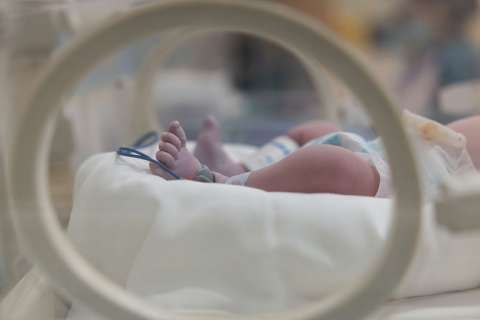Highly targeted electrical stimulation to the brain showed promise as a new treatment for the most common type of stroke, according to a pilot study led by UCLA Health researchers.
The study is the first in humans to test the feasibility of using a targeted type of electrical current, called high-definition cathodal transcranial direct current stimulation (HD C-tDCS), to treat acute ischemic stroke, which occurs when a clot blocks blood supply to part of the brain and accounts for approximately 85% of all strokes. Stroke is a leading cause of death and disability in the United States.
Many patients are not candidates for the two main treatments currently available for acute ischemic stroke: clot-dissolving drugs and a device that reaches into the bloodstream and yanks out clots. Even among those who are eligible for those treatments, just an estimated 20-30% are disability-free three months after their stroke.
In their new study, published June 21 in JAMA Network Open, UCLA Health researchers tested HD C-tDCS as a novel therapy for acute ischemic stroke, in which a series of electrodes are strategically placed across the scalp to deliver a weak inhibitory form of electrical current to the part of the brain suffering from low blood flow. This form of noninvasive stimulation has been used to treat certain neurological and psychiatric conditions, and the researchers had noted the electrical currents appeared to have an effect on the brain’s blood flow. The researchers theorized it may be possible to use HD C tDCS to enhance blood flow to parts of the brain impacted by stroke and protect the threatened brain tissue, known as the penumbra, from irreversible injury.
The pilot study involved 10 acute stroke patients who presented to the emergency department or were admitted at neuro-intensive care and stroke units, were ineligible for currently available treatments, and were within 24 hours of stroke onset. Seven patients were randomized to receive active HD C-tDCS treatment, and three received “sham” stimulation. Using hemodynamic brain scans that acute stroke patients receive upon arrival, the researchers located the stroke area with low blood flow to where the HD C-tDCS treatment was delivered.
“This treatment was aimed at being as targeted and as individualized as possible, only to the area of the brain that has low blood flow or is suffering from stroke,” said the lead researcher on this innovative project, Mersedeh Bahr-Hosseini, MD, a vascular neurologist at UCLA Health. “With this high-definition form of C-tDCS, we were able to refine this electrical field to focus it just on this area.”
The first set of patients, which included 3 patients in the treatment arm and one in the sham group, received 20 minutes of 1 milliamp of stimulation. In the remaining patients, the dose was escalated to 2 milliamps for 20 minutes.
Researchers were able to efficiently provide the treatment in emergency settings, and patients tolerated the treatment.
Bahr-Hosseini said the most exciting finding was that in patients receiving HD C-tDCS, a median of 66% of the penumbra – the threatened brain tissue surrounding the core of the stroke – was rescued in the first 24 hours after stroke, compared to 0% in the sham group.
According to the hemodynamic brain scans performed soon after treatment, patients who received HD C-tDCS showed signs of improved blood flow that was greater in patients receiving 2 milliamps compared to 1 milliamp. In contrast, the blood flow decreased in sham group. “That was also very exciting, because it showed a possibly true biological effect of the treatment,” she said.
Researchers are planning a new multi-site study with Johns Hopkins, Duke University, and the University of Pennsylvania, to gather more data on the treatment’s safety and efficacy. The next study will also include patients who are eligible for the clot-dissolving drugs, known as intravenous thrombolytics.
Other UCLA authors include Jeffrey Saver, Kambiz Nael, Marco Iacoboni, and David Liebeskind. Other authors include Marom Bikson and Gozde Unal of City College of New York.
The study was funded by the American Heart Association (Award No. 18CDA34110160). Please see the study for the conflict of interest statement.
Brain stimulation may prove helpful to acute stroke patients, pilot study suggests
First-of-its-kind study indicates benefits in patients who received small electrical

Share:



